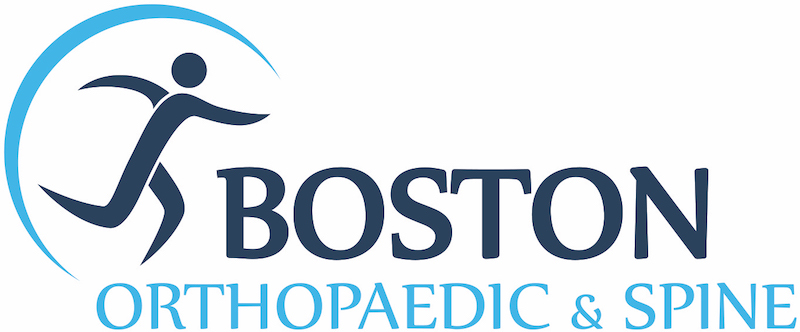Pain Therapy
Orthopedic Injections and Therapies
Discover Non-Surgical Solutions for Joint Pain
For patients whose joint pain does not improve with medication or physical therapy, injections or other minimally invasive treatment options may provide much-needed relief.
The duration of pain relief varies according to the treatment chosen and the individual patient, and many of these treatments are commonly recommended as a way to manage pain and delay surgical intervention. Depending on your condition, your orthopedic provider at Boston Orthopaedic & Spine will discuss your treatment options, and help you decide what works best for you.
Steroid Injections
Intra-articular corticosteroid injections (cortisone) are administered to reduce moderate to severe pain. They can provide quick pain relief and reduce inflammation, which, in turn, could help improve muscle function. However, the effects are not long-lasting, possibly up to two months only. Typically no more than three or four injections should be given in a joint in a year. There is also the potential for long-term joint damage with frequent repeated injections over a long period of time. Knees, shoulders, hips, ankles and elbows can be injected.
Some injections require a visit to the hospital, where the injection is performed by radiology using fluoroscopy to visualize the joint. The shoulder and hip injections to the subacromial space are performed using this technique.
Other injections can be performed in the office. These include injecting steroids into the hip trochanter bursa, the ankle joint, wrist tendons and elbows for tendonitis (tennis elbow).
Viscosupplementation
Joints normally have a fluid (called synovial fluid) that acts as a shock absorber. When the synovial fluid thins and loses its elasticity, the cartilage of the joint can wear down causing osteoarthritis pain. Viscosupplementation is designed to mimic the shock-absorbing quality of healthy synovial fluid in the knee joints. This involves a preparation of Hyaluronic acid that is injected directly into the knee joint. Hyaluronic acid is a naturally occurring substance found in joint fluid.
Viscosupplementation injections can last up to several months for some patients and have been shown to relieve pain in patients who did not get relief from other non-surgical measures of treatment.
Here in the U.S. it is currently only approved for use in the knee, although other joint trials have been ongoing. Two preparations of hyaluronic acid are available:
- Synvisc: A natural product made from rooster combs.
- Euflexxa: An artificial product made from bacterial cultures.
If you are allergic to egg or poultry products or have had a reaction with previous injections, Euflexxa may be the best option for you. Your physician can help you make that decision.
As of January 1, 2024, if viscosupplementation is prescribed to you by a physician, patients can fulfill their prescriptions at a local pharmacy and bring them to the office for our physicians to inject.
Shockwave Therapy
Shockwave therapy, also known as EPAT (Extracorporeal Pulse Activation Technology), is a non-invasive treatment that uses sound waves to stimulate the body’s natural healing process. It is often used to treat injuries in tendons, ligaments, and other soft tissues.
During Shockwave therapy, a handheld device is used to deliver shockwaves to the skin of the affected area. The shockwaves increase blood flow around the injured tissue, promote natural cell regeneration, and reduce pain.
This treatment is much less invasive than injections or surgical treatments, with minimal discomfort during treatment, and virtually no risks, side effects, or recovery time afterward. Typically, this treatment is administered once a week over multiple sessions.
iovera° Treatment
The iovera° system is an innovative, handheld medical device that uses extreme cold to treat joint pain. By freezing nerves in the affected area with just the right amount of freezing cold, pain signals can no longer be sent to the brain, effectively relieving pain instantly. This treatment is commonly used for knee osteoarthritis pain. When administered before or after knee replacement surgery, iovera° also makes recovery easier and less painful, and can help to reduce the use of medications.
iovera° allows patients to return to normal activities and reduce pain quickly without the use of medications or invasive procedures. iovera° may cause minimal discomfort during and immediately after, and the procedure typically takes 30 minutes in the office. Pain relief in the treated joint is immediate, and recovery time is very minimal. The effects of iovera last up to 90 days in most patients.
Both patients who are considering a knee replacement or suffer from knee pain and want to delay surgery may benefit from iovera° treatment.

Frequently Asked Questions
Are injections, iovera° or Shockwave right for me?
If your Boston Orthopaedic and Spine physician has diagnosed you with osteoarthritis, or if you experience chronic pain and you haven’t found pain relief from physical therapy, application of heat and cold, or pain relievers such as Tylenol, then you should consider discussing treatment options.
Are there any risks?
Pain, and swelling of the treatment site are the most common symptoms. These normally clear up within 24-48 hours with just some ice and pain relievers. If severe swelling occurs you should return to the clinic as soon as possible.
Take the First Step
Get an accurate diagnosis and treatment plan from our expert physician team.

